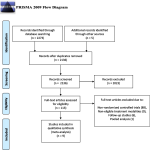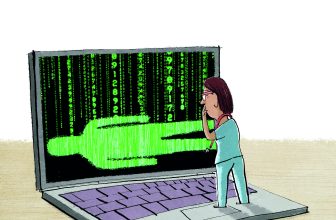
Short-term efficacy and adverse effects of collagenase clostridium histolyticum injections, percutaneous needle fasciotomy and limited fasciectomy in the treatment of Dupuytren’s contracture: a network meta-analysis of randomized controlled trials | BMC Musculoskeletal Disorders
As there is currently no cure for DC, the primary aim of treatment continues to be the excision, dissolvement or disruption of the fibrous cords that prohibit finger extension with the intention of releasing finger contracture. Several treatment options have emerged, with non-operative options ranging from physical therapy, radiotherapy to extracorporeal shockwave treatment. A fairly new treatment option is the injection of the collagenase produced by Clostridium histolyticum. Its treatment effect is based on the degradation of collagen fibers within the DC cords which are ultimately disrupted by forced extension of the injected finger the following day. Food and Drug Administration (FDA) approval in the United States took place in 2010 [26]. The interim treatment license in the European Union, that had been introduced in March 2011, was revoked by the manufacturer in 2019 [27].
The mainstay of treatment for advanced DC is surgery, with several options available of different levels of invasiveness. Among these, NF or aponeurotomy, segmental aponeurectomy and LF, as the most popular treatments, present adequate options.
Although there are multiple treatment options, a paucity of RCTs in the literature persists. Previous studies have, thus, not been able to demonstrate a relative superiority of any of the different treatment procedures due to insufficient high-quality evidence.
In this network meta-analysis, we show that CI presents an effective treatment option, however it does not yield superior short-term results compared to NF despite a higher complication profile. Although CI, rather than NF, is thought to be associated with greater functional improvement in some reports [28], in the available RCTs the differences between the treatment modalities appeared trivial when looking at TPED and contracture reduction to 0°—5° of full extension in treated joints within 30 days. Our results are in line with recent trials that have shown similar short- to medium-term functional results [14].
Similarly, the available literature is conflicted with regard to the role of LF, with some studies showing varying results in favor of CI when evaluating PIP and MCP joint contractures [29, 30], whereas others demonstrated a better performance of LF at early stages and 2-years postoperatively in PIP joints as well as in MCP joints [31].
In our study, LF seemed to be promising compared to NF and CI with regard to relative reduction of TPED and showed an adequate safety profile compared to CI, however only one study contributed to the weighted effect in the analysis [25]. Based on the data presented, the limited follow-up periods and given that recurrence and revision rates have not been included in the analysis, no conclusions can be drawn on any long-term effects. It can only be assumed, that CI and NF, demonstrably less invasive surgical interventions, do not achieve a long-lasting effect comparable with that attained by LF.
Additionally, compared with the other procedures, CI was associated with an increased risk of adverse event occurrence, as well as a higher total number of adverse events. Generally, patients with severe or recurrent DC are more likely to experience complications [32]. In light of this, patient education is paramount as an increase in potential postoperative complications seems to be attributable to the procedure selected. Our results are at odds with previous studies that have shown similar risk and side-effect outcomes of CI in comparison with LF [29, 33]. Sanjuan-Cerveró et al. [34] have previously shown in their meta-analysis of ten cohort studies with random-effects modelling that patients treated with CI had increased odds of adverse effects compared with those treated by LF, which agreed with our analysis. However, their statistical difference disappeared when mild adverse effects were removed from their evaluation.
Overall, the design quality and reporting of studies in DC surgery remains generally poor [10]. As the pressure to warrant the cost-effectiveness of therapeutic measures in the healthcare sector persists, future research should aim towards high-quality comparative analyses of different procedures with validated and reliable outcome assessment tools.
This network meta-analysis was based solely on RCTs and treatment effects were evaluated in a network using a generalized pairwise modelling (GPM) framework. The overall risk of bias assessment identified low to moderate risk profiles. Despite its strengths, it has several limitations. Only nine studies were found to be eligible for final analysis, all of which provided short follow-up data. Moreover, treatment effect evaluation for LF was based on one study [25]. Hence, our results have to be interpreted with caution given that only a single LF study added weight to the analysis, which may have been a major study bias. Similarly, long-term functional treatment effects cannot be extrapolated from this analysis given the limited follow-up time of the underlying studies. The assessment of severe adverse events was determined in consensus; however this may not reflect a general evaluation. Due to potential attrition bias in two of the original studies the analysis was further limited.
Taken all together, the data from the included RCTs support the short-term efficacy of all assessed treatment modalities in DC. However, indications for the superiority of one specific intervention are limited. Based on published trials, the selection of the most suitable treatment modality remains clinically important in order to guarantee optimal functional results with few adverse events. For this, large-scale prospective trials comparing different treatment modalities for DC should be conducted over the course of long follow-up periods. In line with previous reports [34, 35], we suggest the consensus-based generation of a standardized classification to rank complications following DC treatment in a reproducible and objective manner. This would allow for a reduction in interobserver variability in the grading of complications and thereby enable a more sound assessment of treatment effects.



